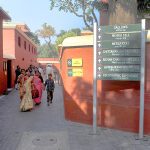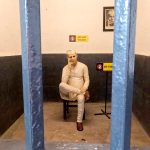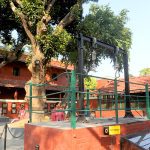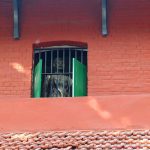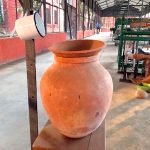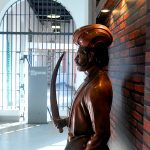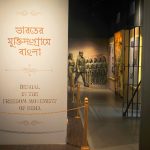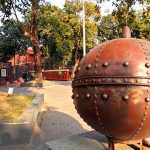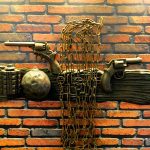
- Home
- News
- Analysis
- States
- Perspective
- Videos
- Education
- Entertainment
- Elections
- World Cup 2023
- Features
- Health
- Budget 2024-25
- Business
- Series
- NEET TANGLE
- Economy Series
- Earth Day
- Kashmir’s Frozen Turbulence
- India@75
- The legend of Ramjanmabhoomi
- Liberalisation@30
- How to tame a dragon
- Celebrating biodiversity
- Farm Matters
- 50 days of solitude
- Bringing Migrants Home
- Budget 2020
- Jharkhand Votes
- The Federal Investigates
- The Federal Impact
- Vanishing Sand
- Gandhi @ 150
- Andhra Today
- Field report
- Operation Gulmarg
- Pandemic @1 Mn in India
- The Federal Year-End
- The Zero Year
- Premium
- Science
- Brand studio
- Home
- NewsNews
- Analysis
- StatesStates
- PerspectivePerspective
- VideosVideos
- Entertainment
- ElectionsElections
- Sports
- Loading...
Sports - Features
- Budget 2024-25
- BusinessBusiness
- Premium
- Loading...
Premium

From Battle of Verandah to gallows: How Alipore Independence Museum has frozen the frame on history

It was around 12 noon on December 8, 1930. Writers Building, an important centre of British power in India, in central Calcutta (now Kolkata), was busy with regular office-hour activities ahead of lunchtime. Three young men impeccably dressed as Europeans in suits, boots and ties, quietly sneaked into the sprawling Greco-Roman-styled building occupying around 58,000 square feet. They...
It was around 12 noon on December 8, 1930. Writers Building, an important centre of British power in India, in central Calcutta (now Kolkata), was busy with regular office-hour activities ahead of lunchtime.
Three young men impeccably dressed as Europeans in suits, boots and ties, quietly sneaked into the sprawling Greco-Roman-styled building occupying around 58,000 square feet.
They crept through the long corridor of the well-guarded building to reach the second floor that housed the office of inspector general of prison, Col NS Simpson.
Simpson was notorious for committing atrocities on incarcerated Indian freedom fighters lodged in Alipore Central Jail. In brutal oppression of freedom fighters, he was perhaps only second to then inspector general of Bengal Police Francis John Lowman.
A few months ago, on August 29, 1930, a medical student of Dacca (now Dhaka, capital of Bangladesh), Benoy Krishna Basu, had shot Lowman dead when the former was visiting the Medical School Hospital to see an ailing senior police official undergoing treatment there.
Now that Lowman was eliminated, Simpson was on the top of the hit list.
After eliminating Lowman, Benoy managed to escape to Calcutta, hoodwinking the British police, who had announced a cash reward of Rs 5,000, a huge amount at that time, to nab him. The massive manhunt came to a naught.
Benoy, accompanied with two other members of the Bengal Volunteers, an underground revolutionary group, was now standing in front of Simpson’s office. Two other young men with him were Dinesh Gupta and Badal Gupta.
Before anyone could react, the three opened fire from their revolvers on the ruthless British official, killing him instantly. What followed was an intense gunfight that came to be known in the Indian freedom struggle as Battle of Verandah. Three young men fought valiantly against the contingent of British police that encircled them in the corridors of Writers Building. The battle lasted for around 15 minutes.
When they were about to be overpowered, Badal swallowed potassium cyanide, while Benoy and Dinesh shot themselves point blank with their firearms. Benoy succumbed to his injuries in the hospital five days later. Dinesh was hanged to death at the Alipore Jail on July 7, 1931.
Many such brave deeds that have been buried under the dust of time immediately come to mind as one steps into the Alipore Jail, the nerve centre of British atrocities, which has now been converted into a museum — Alipore Independence Museum.
The museum, an effort of the West Bengal Housing Infrastructure Development Corporation (WBHIDCO), is a veritable tour of our freedom struggle, particularly its armed revolutionary part.
Well-manicured lawns and crimson bougainvillaea from where a bust of Jawaharlal Nehru greets visitors as they enter the 116-year-old heritage structure, may convey a sense of serenity. But as one moves forward and crosses an iron art installation, towards the left pop up the gallows.
The very sight of it with hessian rope and trapdoors can give goosebumps. A list of 10 martyrs, including Dinesh, who walked to the gallows for India’s freedom, can be seen here along with the brief inscription of their heroic deeds.
In front of the gallows are detention cells where convicts were kept before execution. A peep into the cell gives a fair idea of the cruelty meted out to the convicts in the last few days of their life. A concrete platform served as a bed not very far from the corner that was used as toilet.
A statue of a British officer with a hunter in hand is placed outside the cells to recreate the past that is bound to send shivers down the spine.
In over a dozen buildings spread on the 15.2-acre premises, there are also special cells where many prominent freedom fighters such as Jawaharlal Nehru, Subhash Chandra Bose, Chittaranjan Das and Dr Bidhan Chandra Roy, to name a few, were incarcerated.
A hexagonal two storied red-brick building that stands in the central courtyard served as the main watch tower.
The erstwhile jail hospital building has now been converted into an exhibition gallery.
The museum also has a seminar hall, library, souvenir room, and a café themed on the Indian National Army among other attractions. There is also a separate coffee house near the entrance gate.
Letters, photographs and other documents and artefacts related to the freedom struggle are among the treasure troves exhibited on the premises, which served as a correctional home till 2019.
A light and sound show depicting the lives and struggles of various freedom fighters is organised on the ground adjacent to the erstwhile jail hospital building.
The museum remains open from 11 am to 5.30 pm on all days except Monday. The entry fee is Rs 30. A light and sound show is held from 6 pm to 7 pm, for which a separate ticket of Rs 100 per person is needed.
Visitors, by the end of their museum tour, have had a sneak peek into a proud history of resistance to occupation and martyrdom frozen in time.

